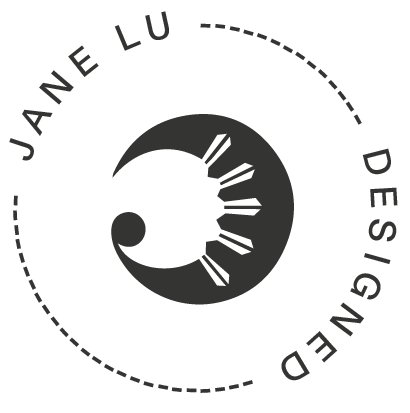
時間は食べるべきものです
Time should be savored.
DATE
ORIGINAL: May, 2019
UPDATE: December 2022
CATEGORY
Food Design, Branding
DESIGNER
Jane Lu
MENTOR
Mark Fox [Branding]
Zeyuan Zhang [Food Design]
ORIGINAL: May, 2019
UPDATE: December 2022
CATEGORY
Food Design, Branding
DESIGNER
Jane Lu
MENTOR
Mark Fox [Branding]
Zeyuan Zhang [Food Design]
Karisome: Creative Wagashi Elevated
“Karisome” (カリソメ | 仮初) is taken from Japanese, meaning “ephemeral” “unstable” and” always changing”. The food design takes inspiration from the Superflat Art Movement, in which artists put low-level pop cultural junk on pedestals and present it as high-end art to comment on consumerism, fast urban development, and Japanese obsession with the idea of the juvenile at the beginning of the 2000s.
Wagashi(和菓子) is a Japanese traditional dessert that represents “the five sense”, takes the best material of the season, and expire fast. Have to be tasted before it goes bad. We think the core idea of Superflat is highly relevant in nowadays world with the fast growth/changes brought by technologies and gentrification, and other complex issues coming with it. We aim to take abstract ideas and symbolize them in the food itself, bringing enjoyment to the audience same time as reflections.
“Karisome” (カリソメ | 仮初) is taken from Japanese, meaning “ephemeral” “unstable” and” always changing”. The food design takes inspiration from the Superflat Art Movement, in which artists put low-level pop cultural junk on pedestals and present it as high-end art to comment on consumerism, fast urban development, and Japanese obsession with the idea of the juvenile at the beginning of the 2000s.
Wagashi(和菓子) is a Japanese traditional dessert that represents “the five sense”, takes the best material of the season, and expire fast. Have to be tasted before it goes bad. We think the core idea of Superflat is highly relevant in nowadays world with the fast growth/changes brought by technologies and gentrification, and other complex issues coming with it. We aim to take abstract ideas and symbolize them in the food itself, bringing enjoyment to the audience same time as reflections.
Background
SUPERFLAT
The food & dining experience design took inspiration from the art movement Superflat, a postmodern art movement founded by the artist Takashi Murakami.
![]()
![]()
![]()
![]()
The food & dining experience design took inspiration from the art movement Superflat, a postmodern art movement founded by the artist Takashi Murakami.




CORE VALUES OF THE MOVEMENT:
![]()

CHALLENGE
How do we address complex & abstract real-world issues, and reflect them in the food design & dining experience?
WAGASHI AS THE FORM
Wagashi are traditional Japanese desserts known also as the “art of the five senses.” With their beautiful design, delicate sweetness, and pleasant taste, they offer a layer-upon-layer of enjoyment. One by one, each wagashi sets a seasonal scene, taking the best material of the season and expiring fast.
As we are trying to simplify complex issues into edible forms, symbolism comes in handy. Traditional wagashi takes seasonal themes and motifs to complete its storytelling with one single object. We are also trying to tie the urgency of multiple issues into the concept of time and play with the idea of something fast to spoil but at its peak short moment of enjoyment, we decided there’s no better form than wagashi.
Wagashi are traditional Japanese desserts known also as the “art of the five senses.” With their beautiful design, delicate sweetness, and pleasant taste, they offer a layer-upon-layer of enjoyment. One by one, each wagashi sets a seasonal scene, taking the best material of the season and expiring fast.
As we are trying to simplify complex issues into edible forms, symbolism comes in handy. Traditional wagashi takes seasonal themes and motifs to complete its storytelling with one single object. We are also trying to tie the urgency of multiple issues into the concept of time and play with the idea of something fast to spoil but at its peak short moment of enjoyment, we decided there’s no better form than wagashi.
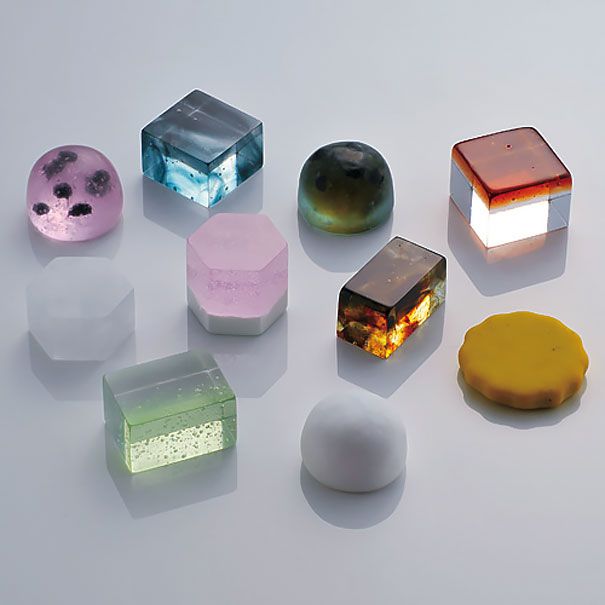
Naming & Branding
“Karisome” (カリソメ | 仮初) is taken from Japanese, meaning “ephemeral” “unstable” and” always changing”.
The neutrality of the naming could work both ways: it is a reminder that what we are chasing is after all, ephemeral; at the same time, why don’t we spend time and take our roots deep in the present moment?

The logo took inspiration from the flower Queen of the Night, which only blossoms at night for a short time around 1-2 hours. We created a grid to give it a pixelated 2D look, tying back to the theme of Superflat, to give it a retro digital vibe.
![]()
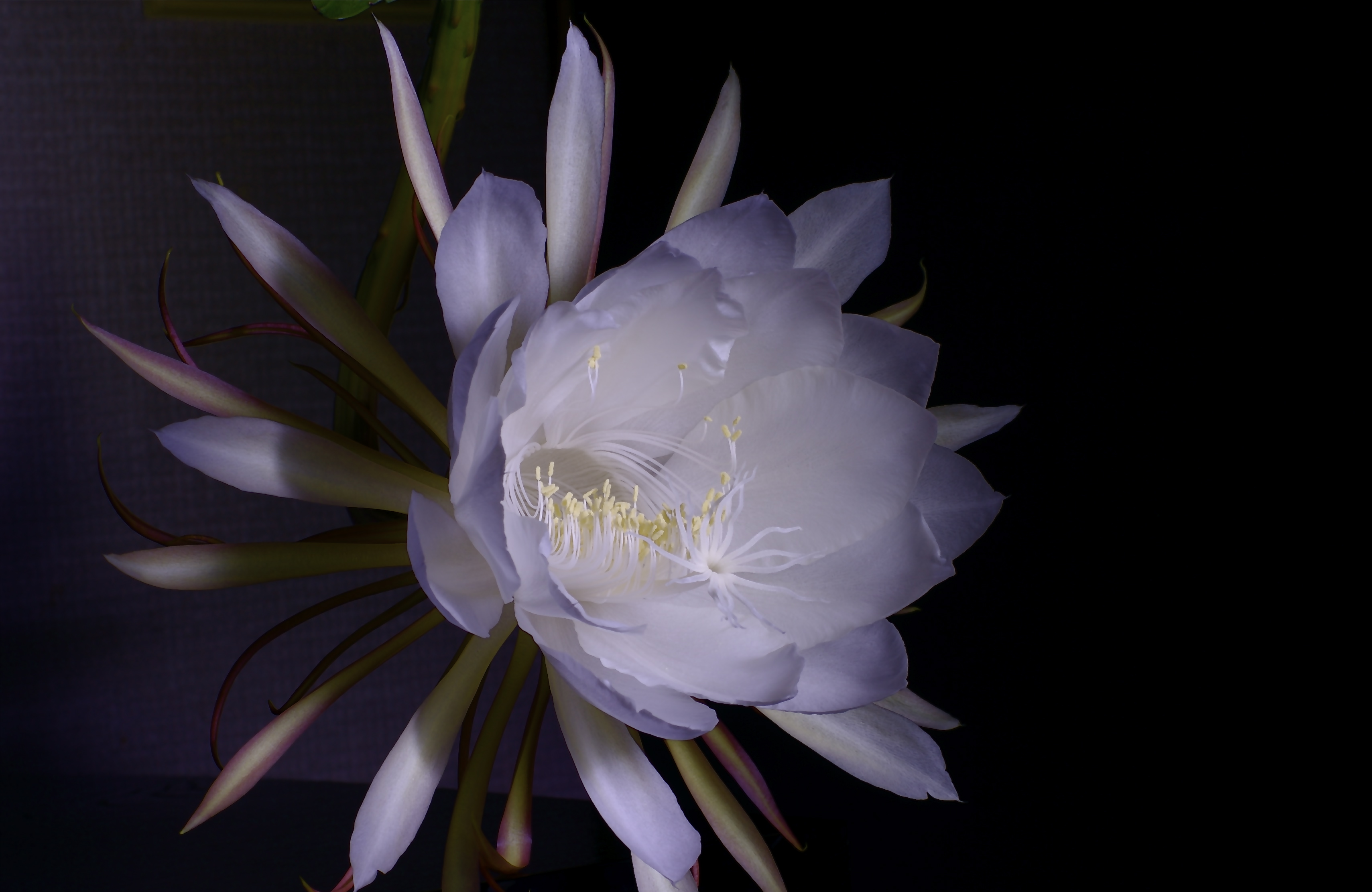


Approach
Take the core values of Superflat, and the form of wagashi, we’re creating 4 signature desserts that reflect and comment on the commodification of sexuality, consumerism, urbanization, and the exploitation of labor under capitalism. While taking abstract and complex issues and putting each of them into one single wagashi, we aim to bring reflections through this experience.




Drafts of Ideations
Process
To build these wagashi, we started with 3D modeling and ingredients sourcing. After analyzing the material, texture, molding process and structure of each wagashi, we eventually decided to reverse mode and 3D print the die casting so we can go through trials and tryouts more easily.
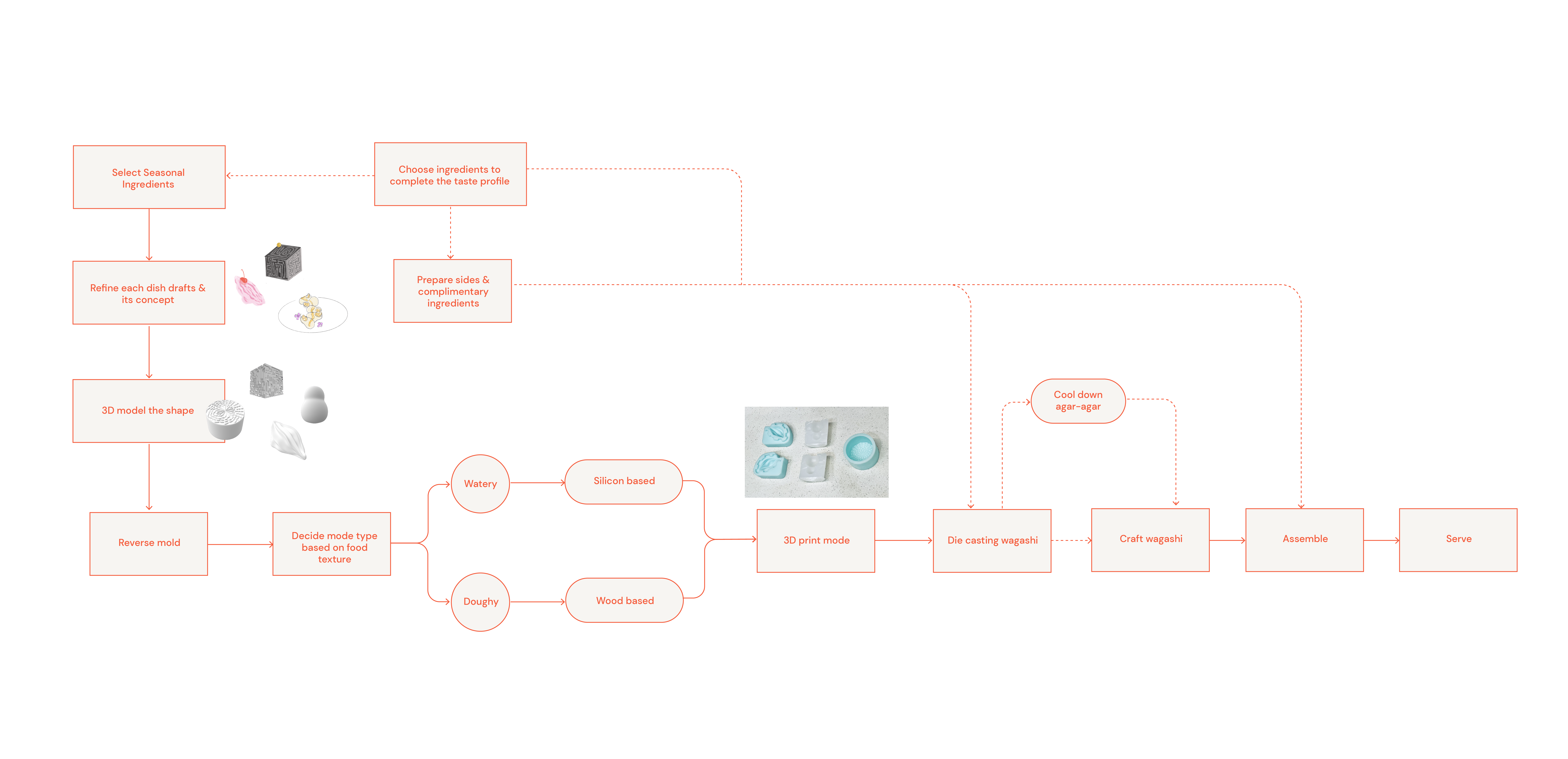
Wagashi Design
PINK MOON ピンクムーン
We designed & 3D printed this mizu yokan into a shape that represents both shellfish and vulva. The edible gold leaf creates a rusty look on the yokan and also gives it a layer of texture. Utilizing the layering of symbolism, this dish serves as a critique of the sex commodity.
Ingredient:
We designed & 3D printed this mizu yokan into a shape that represents both shellfish and vulva. The edible gold leaf creates a rusty look on the yokan and also gives it a layer of texture. Utilizing the layering of symbolism, this dish serves as a critique of the sex commodity.
Ingredient:
-
Agar-agar
- Food coloring
- Strawberry
- Sugar
- Gold leaf
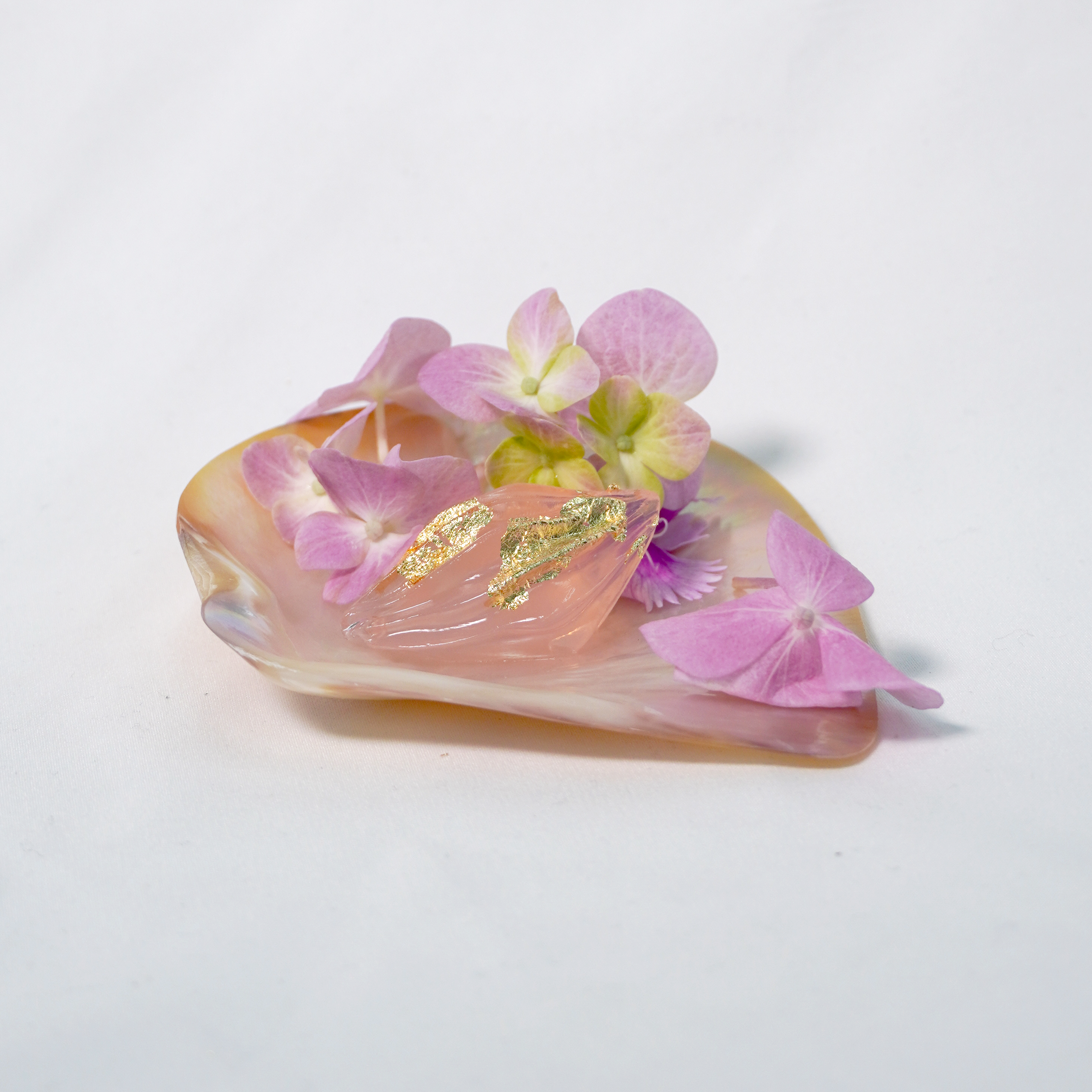

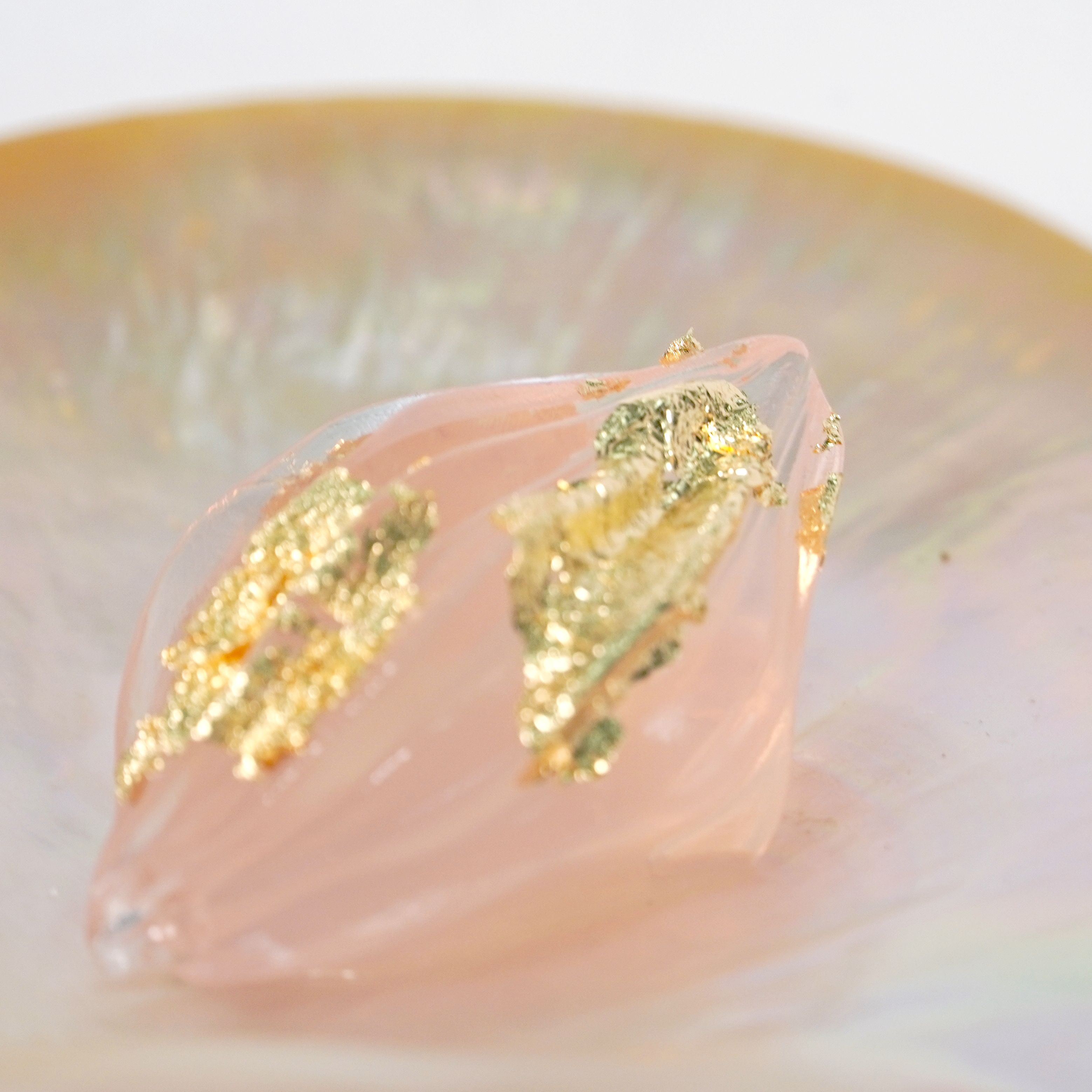
DARK FOREST 暗い森
Taking the idea of a maze as a symbol of the urban jungle, we created this dish with black sesame bean paste, molded with a maze pattern on the surface. Utilize cocoa cookie crumbs to bring the cozy taste to another level and add a layer of texture. This dish symbolizes mass urbanization and its destruction of both environment and humans.
Ingredient:
Taking the idea of a maze as a symbol of the urban jungle, we created this dish with black sesame bean paste, molded with a maze pattern on the surface. Utilize cocoa cookie crumbs to bring the cozy taste to another level and add a layer of texture. This dish symbolizes mass urbanization and its destruction of both environment and humans.
Ingredient:
- Wagashi bean paste
- Black sesame
- Coco cookie crumbs
- Edible gold powder
- Edible gold sugar bead

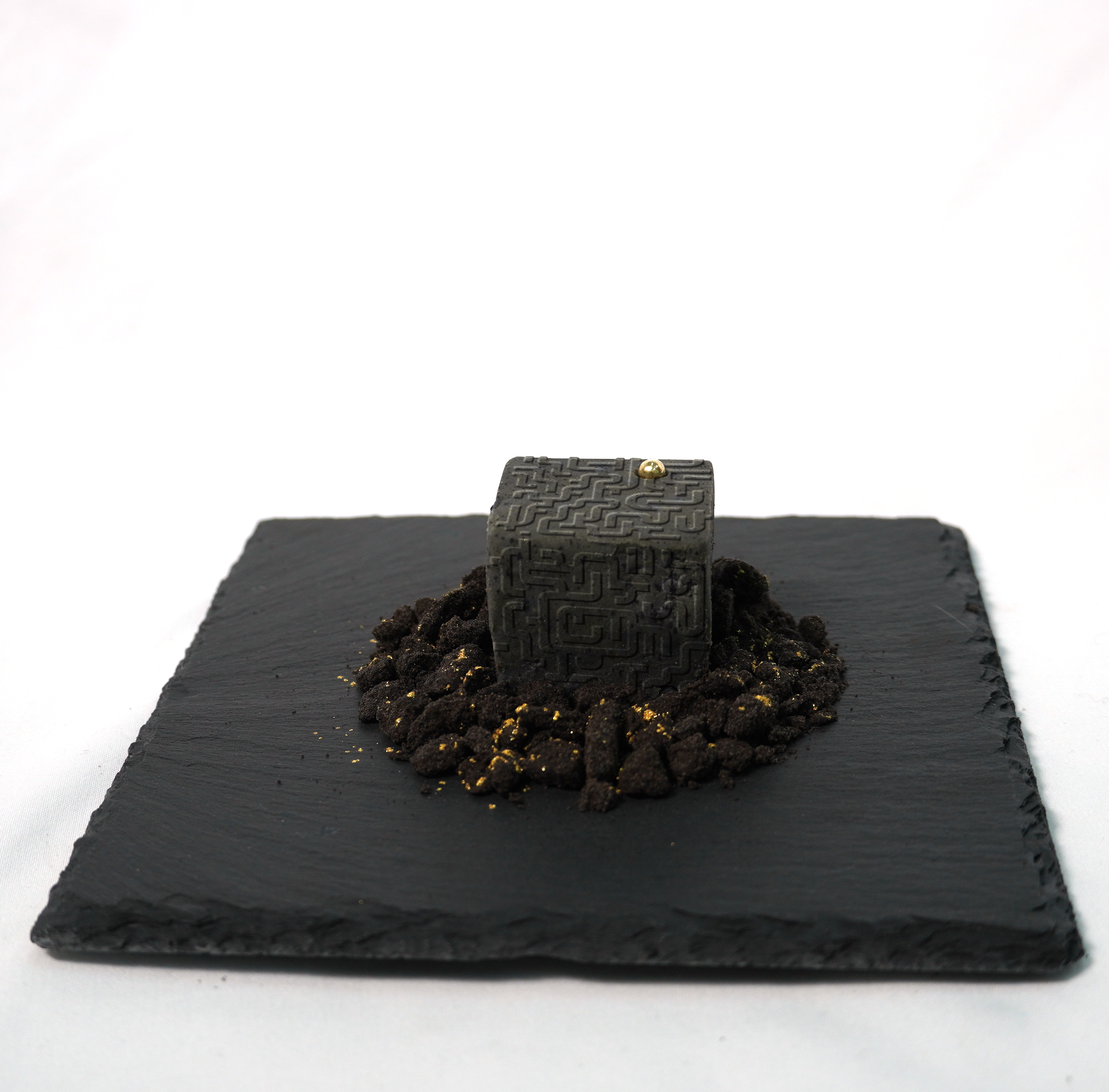

HARVEST SEASON おいし季節
A dish embodies the seasonal tastes of autumn into one entity. We took the special Asian delicacy of bee larvae, deep fried and coated with sugar, wrapped up with the wagashi dough mixture of bean paste and mashed chestnut. This dish represents the new generation of youth labor, through the lens of fantasy, and soft life.
Ingredient:
- Wagashi bean paste
- Chestnut
- Bee larvae
- Honey
- Orange peel



KALEIDOSCOPE DREAM 万華鏡の夢
For this dish, we played with the idea of a kaleidoscope to create the emboss on the top: a dizzying, intriguing yet artificial pattern. The transparency of the yokan gives it a plastic feeling, with a colored sea-salted lemon piece at the bottom. This piece is a reflection on consumerism and its impact on the ocean and climate.
Ingredient:
For this dish, we played with the idea of a kaleidoscope to create the emboss on the top: a dizzying, intriguing yet artificial pattern. The transparency of the yokan gives it a plastic feeling, with a colored sea-salted lemon piece at the bottom. This piece is a reflection on consumerism and its impact on the ocean and climate.
Ingredient:
- Agar-agar
- Food coloring
- Sugar
- Lemon
- Sea salt



Dining Experience
To complete the dining experience, we sorted out the elements to make everything whole. The goal is to not only help the customers to reflect on the issues through food, but also through other elements of the restaurant and the service itself.
PROCESS CHART

